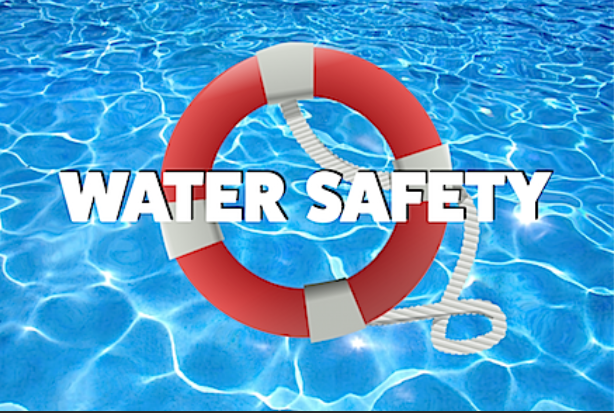
Drowning is a tragic and preventable loss of life that affects thousands of people each year worldwide. Despite its prevalence, numerous myths and misconceptions surround drowning, which can hamper our ability to address and prevent this serious issue. In this short article, we will explore these myths, discuss the importance of promoting water safety, and delve into the science of drowning to better understand the risks and how to mitigate them.
5 Common Drowning Myths
Here are 5 really common myths about drowning:
Myth #1: Drowning is Always Noisy
One of the most pervasive myths surrounding drowning is the belief that it is always accompanied by loud, splashing, and desperate cries for help. In reality, this is far from the truth. Drowning is often a silent event. When a person is struggling to stay afloat and inhaling water, their ability to call out for help is significantly impaired. The instinct to protect the airway takes precedence over vocalizing, making it a silent and inconspicuous affair.
Myth #2: Drowning Victims Can Always Thrash Around
Another myth associated with drowning is that a victim will vigorously thrash and flail in the water. While some individuals may exhibit these behaviors, many others do not. In reality, drowning can manifest as subtle movements or a vertical position in the water, with their mouth briefly submerging and re-emerging. Such inconspicuous signs can easily be overlooked.
Myth #3: Lifeguards Can Prevent All Drownings
Lifeguards are undoubtedly vital in maintaining safety at swimming pools and beaches, but it is crucial to understand that they are not infallible. Even trained lifeguards can miss subtle signs of drowning, especially in crowded or chaotic environments. Therefore, it is essential for individuals to be vigilant and proactive about their own safety and the safety of those around them.
Myth #4: Drowning Only Happens in Deep Water
Many people believe that drowning can only occur in deep water. This is a dangerous misconception, as shallow water can be just as hazardous. In fact, a significant number of drowning incidents happen in shallow water, particularly among children who may not have a strong swimming ability. Bodies of water like bathtubs, kiddie pools, and even large puddles pose a risk.
Myth #5: Floating Devices Guarantee Safety
Floatation devices like life jackets, noodles, or inflatable rings can provide a sense of security, but they are not infallible. People may still get into life-threatening situations while wearing these devices, especially if they are not used correctly. It is essential to remember that no floatation device can replace the need for constant supervision, especially for non-swimmers or inexperienced swimmers.
Promoting Water Safety Measures
To address these myths and promote water safety, it is essential to implement a set of proactive measures that can reduce the risk of drowning incidents. Here are some practical steps:
Learn to Swim: Swimming is a valuable life skill that can greatly reduce the risk of drowning. Enroll in swimming lessons, especially for children, to ensure they can navigate the water safely.
Supervision: Never leave children or inexperienced swimmers unattended near water, even if they have floatation devices. Continuous and vigilant supervision is crucial.
Educate Yourself: Understanding the signs of drowning and knowing what to do in an emergency can be life-saving. Basic water rescue skills and CPR training are valuable assets.
Pool Fencing: If you have a swimming pool, install appropriate barriers like fences and gates to prevent unauthorized access, particularly in households with young children.
Know the Water Environment: Different bodies of water require different safety precautions. Educate yourself about the specific risks and safety measures associated with lakes, rivers, oceans, and pools.
Avoid Alcohol and Drugs: The consumption of alcohol and drugs can impair judgment and coordination, significantly increasing the risk of drowning. Avoid these substances when swimming or supervising others.
Understanding Drowning
To gain a more comprehensive perspective on drowning, let’s delve into its science and the factors that contribute to it.
Drowning, in essence, is a process that occurs when the airway becomes obstructed and prevents a person from breathing. This can happen due to the inhalation of water or other fluids or due to the inability to access breathable air. There are several key phases of drowning:
Distress: This phase marks the initial struggle to stay afloat. A person may still be able to call for help, but their ability to do so diminishes rapidly as the situation worsens.
Active Drowning: During this phase, a person is unable to stay above the water’s surface and may exhibit desperate, involuntary movements in an attempt to breathe.
Passive Drowning: In this stage, the victim is submerged and unresponsive, with their body beginning to sink. At this point, the person is at high risk of drowning.
Post-Drowning: If rescued from the water, a person may still be at risk due to complications such as fluid in the lungs, hypoxia, or cardiac arrest. Prompt medical attention is crucial.
Drowning can happen to anyone, regardless of age or swimming ability. Factors such as panic, exhaustion, the element of surprise, or medical conditions can make it more likely. Understanding these phases of drowning can help demystify the process and emphasize the importance of water safety and prevention.
In conclusion, drowning is a serious and often misunderstood threat to public safety. Myths about its nature, along with complacency, can lead to tragic consequences. By debunking these myths, promoting water safety measures, and understanding the science of drowning, we can take significant steps toward preventing these unnecessary tragedies. Remember that constant supervision, education, and basic water rescue skills are key to reducing the risks associated with water activities. With increased awareness and proactive measures, we can strive to make our aquatic environments safer for everyone.

